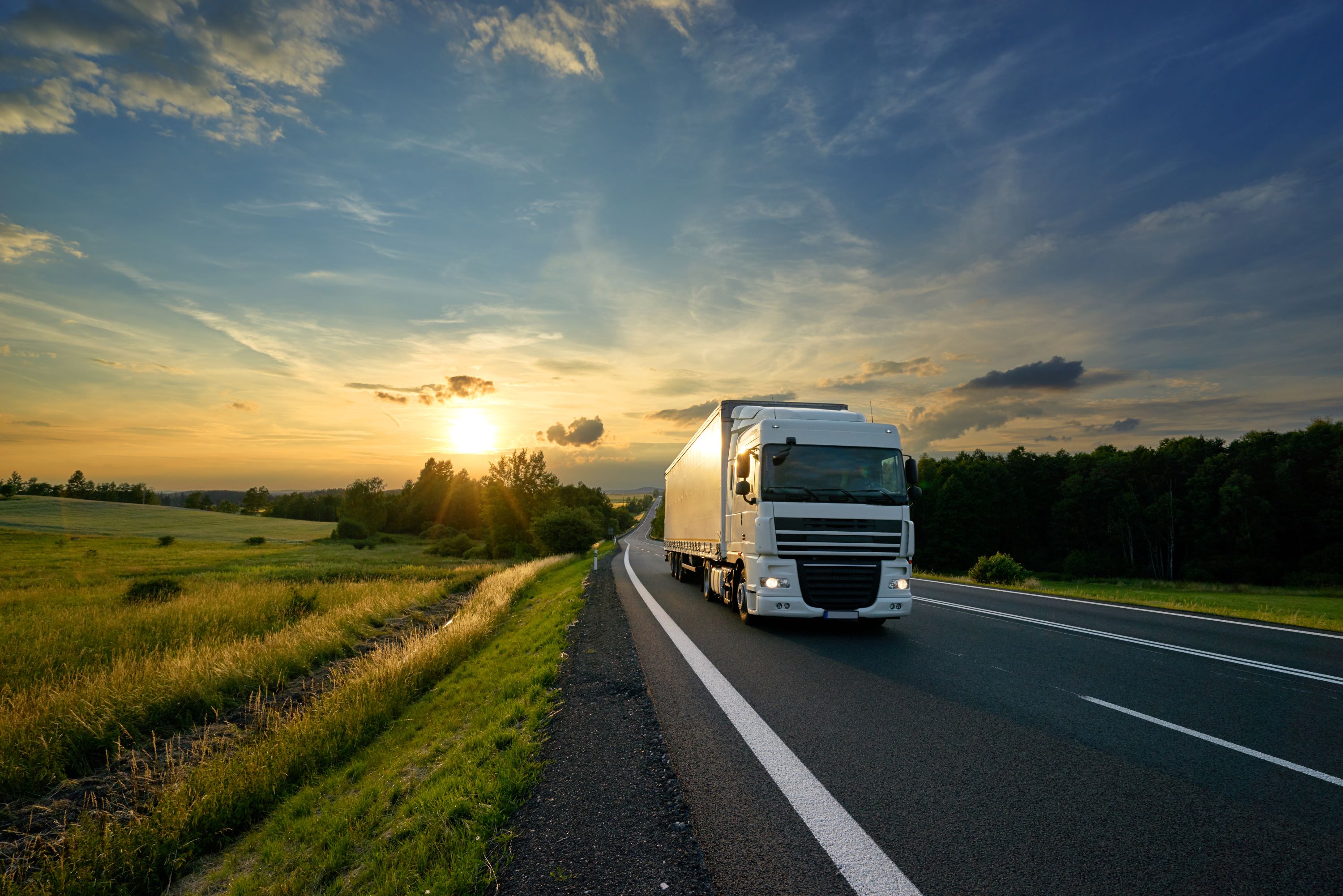
Susie Jones
Quelles sont les implications des limitations de vitesse à 20 miles par heure pour les flottes ?
Créée: 16/04/2025
•
Mise à jour : 16/04/2025
En 2023, 188 poids lourds ont été impliqués dans des collisions mortelles, ce qui représente une baisse par rapport à 2022, mais constitue néanmoins une statistique préoccupante. Ces accidents peuvent être dus à plusieurs facteurs, tels que la fatigue du conducteur, le mauvais entretien du véhicule, les conditions météorologiques ou les actions d'autres usagers de la route. Cependant, les données de l'organisation caritative Brake, spécialisée dans la sécurité routière, suggèrent que [58 %] (https://www.brake.org.uk/get-involved/take-action/mybrake/knowledge-centre/uk-road-safety) des décès liés à la route étaient dus à la vitesse. Dans ce blog, nous verrons comment la mise en place de limitations de vitesse à 20 miles par heure pourrait avoir un impact sur les opérations des flottes et réduire le nombre de décès.
Où se produisent les accidents de poids lourds ?
Selon [EROS] (https://www.insurancerevolution.co.uk/blog/hgv-driving-safety-statistics/), seuls 10 % des accidents de poids lourds se produisent sur une autoroute, les 90 % restants étant plus susceptibles de se produire sur une route urbaine ou rurale. Sur les routes de campagne, les conducteurs de poids lourds sont confrontés à des espaces étroits, des virages serrés et des interactions avec des usagers de la route vulnérables tels que les cyclistes et les piétons, ce qui augmente le risque d'accident. Les zones urbaines présentent un risque plus élevé pour les conducteurs de camions en raison de la densité plus élevée du trafic, des arrêts fréquents, de l'activité des piétons et de la complexité du tracé des routes, ce qui, combiné à l'imprévisibilité des routes urbaines, les rend plus dangereuses pour les conducteurs de camions.
L'impact des zones limitées à 20mph.
Les chiffres publiés par le [gouvernement gallois] (https://motortransport.co.uk/industry-news/fleetcheck-urges-operators-to-back-calls-for-wider-use-of-20mph-speed-limits/25490.article) font état de 100 victimes de moins sur les routes urbaines en 2024 par rapport à la même période en 2023, avant que la limitation de vitesse à 20mph ne soit appliquée dans les zones urbaines.
Le programme est soutenu par des organisations telles que Brake et Cycling UK, et maintenant les spécialistes de la gestion de flotte [FleetCheck] (https://motortransport.co.uk/industry-news/fleetcheck-urges-operators-to-back-calls-for-wider-use-of-20mph-speed-limits/25490.article) encouragent les entreprises de transport à soutenir le programme. Ils affirment que le passage de 30mph à 20mph aura un impact minimal sur l'efficacité de la flotte et renforcent fortement l'idée qu'il sauvera des vies chaque année.

Que pensent les flottes et les conducteurs de la limitation de vitesse à 20mph ?
Selon FleetCheck, les transporteurs routiers ont des sentiments mitigés à l'égard de cette initiative. Certains considèrent les changements comme une entrave à l'efficacité, arguant que l'abaissement des limites de vitesse pourrait contraindre certaines flottes à réduire le nombre de livraisons qu'elles peuvent effectuer au cours d'une période donnée.
Sur les pages de médias sociaux de SNAP, les conducteurs ont exprimé des sentiments très forts à l'égard de cette suggestion. L'un d'entre eux a fait un commentaire :
"Qui va soutenir l'instauration de nouvelles zones à 20 miles par heure ? Le problème, c'est la qualité de la conduite dans son ensemble. Depuis que nous sommes sortis de l'isolement, les normes de conduite sont diaboliques, qu'il s'agisse des voitures, des camionnettes ou des camions.
Le sentiment est resté le même sur les réseaux sociaux, beaucoup n'étant pas favorables à ce changement.
Les avantages d'un plus grand nombre de zones à 20mph.
Les zones à vitesse réduite présentent plusieurs avantages pour les conducteurs de camions.
Des vitesses plus faibles améliorent les temps de réaction et réduisent les distances d'arrêt, ce qui permet d'éviter plus facilement les collisions, en particulier dans les zones urbaines.
L'usure des camions est plus faible lorsque les limitations de vitesse sont réduites.
Les obstacles auxquels les entreprises de flotte pourraient être confrontées.
Comme nous l'avons mentionné, certaines entreprises de flottes craignent que l'abaissement des limitations de vitesse ne réduise le nombre de livraisons qu'elles peuvent effectuer au cours d'une période donnée. Les flottes pourraient également être confrontées aux défis suivants :
L'allongement de la durée des trajets : il affecte les livraisons sensibles au facteur temps, ce qui a un impact sur la programmation et les attentes des clients.
Planification des itinéraires: les entreprises peuvent être amenées à adapter leurs itinéraires pour tenir compte des vitesses réduites.
Il sera essentiel d'investir dans une formation supplémentaire des conducteurs afin de garantir le respect des nouvelles limitations de vitesse.
Bien que ces questions puissent poser des défis supplémentaires aux entreprises de flotte, nombre d'entre elles peuvent être gérées de manière proactive. Nombreux sont ceux qui affirment que les avantages en matière de sécurité à long terme l'emportent sur les obstacles.

Les chiffres parlent d'eux-mêmes.
Dans une campagne revisitée intitulée [Hazardous Highways] (https://snapacc.com/hazardous-highways/), SNAP a identifié les endroits les plus dangereux en GB. Nous avons approfondi la question pour découvrir quelles routes pourraient bénéficier d'une réduction de la vitesse maximale autorisée.
Le SNAP a découvert que les routes du Sud-Est étaient les plus dangereuses. Le Kent a les routes les plus dangereuses de Grande-Bretagne et [propose un objectif de zéro décès sur les routes] (https://www.kent.gov.uk/roads-and-travel/road-safety/vision-zero-road-safety-strategy?utm_source=chatgpt.com) sur le réseau routier du Kent d'ici 2050. Quelles sont les routes les plus préoccupantes ?
L'A254:** Une route courte de quatre miles seulement, mais qui a été désignée comme l'itinéraire le plus risqué de Grande-Bretagne en 2018. Le rapport a mis en évidence un tronçon de l'A254 entre la jonction de l'A28 à Margate et la jonction avec l'A255 près de Ramsgate. La limitation de vitesse sur ce tronçon varie entre 30mph et 40mph - les zones bâties et le flux de trafic important en provenance du port de Douvres rendent cette route particulièrement dangereuse pour les cyclistes, les piétons et les autres usagers de la route. Ce tronçon de route pourrait-il bénéficier d'une limitation de vitesse plus lente ?
L'A252:** Réputée pour son taux d'accidents élevé, l'A252 s'étend sur 8,7 miles. En 2020, des travaux ont été entrepris pour réduire le nombre et la gravité des accidents. Parmi les changements, la vitesse a été ramenée de 60mph à 50mph sur ce tronçon, sauf là où des limites inférieures sont en vigueur. Mais cela suffira-t-il à effacer la réputation de cette route comme l'une des pires de Grande-Bretagne ?
Le Surrey et l'Essex sont également en tête de liste, avec un total combiné de [30 378] (https://www.number1plates.com/blog/britains-worst-areas-for-road-accidents/#:~:text=With%2020%2C473%20recorded%20accidents%20from,as%20some%20of%20the%20worst.) accidents au cours des cinq dernières années. Les taux d'accidents élevés dans le Surrey peuvent être attribués au mélange de villes peuplées et de routes rurales. La proximité de Londres et des grandes autoroutes a entraîné un plus grand nombre de collisions.
La M25:** Également connue sous le nom de London Orbital Motorway, la M25 est l'une des routes les plus fréquentées de Grande-Bretagne et le deuxième périphérique le plus long d'Europe. Entre 2007 et 2016, 7 673 accidents et 80 décès ont été signalés. En tant qu'autoroute cruciale, des ajustements de vitesse aussi bas que 20mph seraient ridicules. Cependant, la M25 bénéficierait-elle de zones à vitesse limitée ?
L'A3, qui s'étend sur 67 miles, peut être une route difficile à conduire en raison du volume élevé de la circulation, des limitations de vitesse et des tronçons en mauvais état.
Questions fréquemment posées
Quelle est la vitesse maximale autorisée pour les camions ?
Les conducteurs de camions doivent respecter des règles strictes en matière de vitesse. Ces restrictions sont mises en place pour tenir compte de la taille, du poids et de la capacité de freinage d'un camion.
Les camions de plus de 7,5 tonnes sont limités à une vitesse maximale de 50 miles par heure.
Routes à chaussées séparées: La vitesse maximale autorisée pour un camion de plus de 7,5 tonnes est de 60mph.
Autoroutes:** Les chauffeurs de camion ne doivent pas dépasser 60mph sur une autoroute.
Réglementation sur les limiteurs de vitesse au Royaume-Uni Au Royaume-Uni, tout camion doit être équipé d'un limiteur de vitesse afin de limiter la vitesse maximale du véhicule.
Exigences légales au Royaume-Uni:** Tous les camions de plus de 3,5 tonnes doivent être équipés d'un limiteur de vitesse réglé sur 56 mph.
Comment ils fonctionnent:** Les limiteurs de vitesse limitent la quantité de carburant fournie au moteur lorsque le véhicule atteint une vitesse prédéfinie, afin que le conducteur ne puisse pas dépasser cette limite.
Un camion privé doit-il être équipé d'un limiteur de vitesse ?
Un camion privé n'a pas besoin de limiteur de vitesse, sauf s'il est utilisé à des fins commerciales. Vous devez déclarer si votre véhicule est dispensé de limiteur de vitesse lors du contrôle technique en remplissant un [formulaire de déclaration de limiteur de vitesse] (https://www.gov.uk/government/publications/hgv-speed-limiter-exemption-declaration-form).



